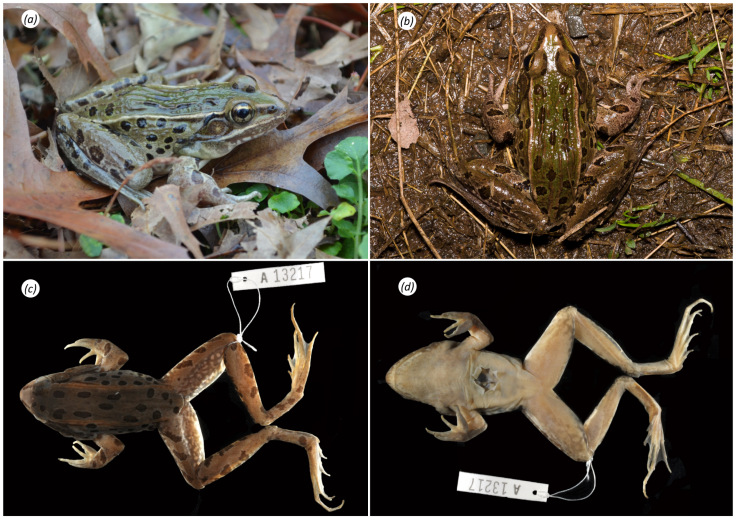Scientists Discover New Species Of Leopard Frog, Rana Kauffeldi, In New York

New York City, the most populous city in the United States, is also home to a new species of leopard frog, whose existence was first claimed more than seven decades ago. The frog, which also exists in wetlands stretching from Connecticut to North Carolina, has been named “Rana kauffeldi” after Carl Kauffeld, the ecologist who first discovered it.
The new leopard frog, which is described in a study published in the journal PLOS ONE on Wednesday, has a unique leopard-print skin in shades of brown and green. According to scientists, the frog will now be commonly referred to as the Atlantic Coast Leopard Frog.
“Even though he was clearly on to something, the claim Carl Kauffeld made in his 1937 paper fell short,” Jeremy Feinberg, a researcher at Rutgers University in New Jersey and the study’s lead author, said in a statement. “We had the benefits of genetic testing and bioacoustic analysis that simply weren’t available to Kauffeld to prove that even though this frog might look like the two other leopard frogs in the area, it was actually a third and completely separate species.”
Feinberg first spotted the frog on Staten Island six years ago, not far from the Statue of Liberty. In the latest study, the scientists have provided the evidence needed to identify the frog as a new species. The scientists also presented information on the distribution, ecology and conservation status of the species.
The new species, which brings the total number of leopard frogs in the world to 19, remained unnoticed in a highly populated area spanning eight east coast states and several major North American cities, stretching across 485 miles, according to scientists.
“This discovery is unexpected in one of the largest and most densely populated urban parts of the world,” the scientists said in the study. “It also demonstrates that new vertebrate species can still be found periodically even in well-studied locales rarely associated with undocumented biodiversity.”
Rana kauffeldi was previously confused with two closely-related species because of the similarity in their appearance. But, after Feinberg encountered the new frog in 2008, modern technology stepped in and helped scientists examine the genetics and mating calls of leopard frogs from various parts of the Northeast. Further analysis helped them determine that the frog found living in the marshes of Staten Island was, in fact, a new species that might also be inhabiting ponds and wetlands beyond New York and New Jersey.
“The process of recognizing, identifying and documenting a new species is long and arduous but it is important for our understanding of the wide ranging wildlife in urban as well as other environments,” Joanna Burger, a professor at Rutgers, said in the statement.
© Copyright IBTimes 2024. All rights reserved.






















